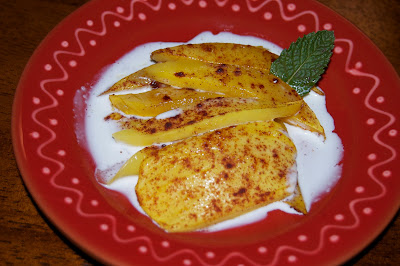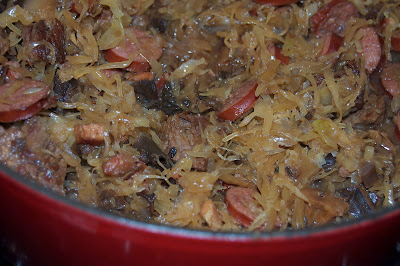Mexico is a huge country with a wealth of culinary variety, and so far, I’ve only managed to explore the food of Oaxaca and Michoacan in this blog. To remedy that, I thought I’d best sample the eats of at least one more region before my 52 Cuisine series ends. So we’re feasting on the delights of the Yucatan, the part of eastern Mexico that sticks out rather like a foot into the Caribbean. If you’ve ever done the obligatory college spring break jaunt to Cancun or the island of Cozumel, that’s the territory we’re talking about.
La Flor de Yucatan, in the shadow of downtown Los Angeles, is a friendly neighborhood bakery that happens to sell a vast array of savory eats as well pastries and wedding cakes. It’s tiny, with no place to sit inside, and only a picnic table in back if you want to park it and dine on the spot. But that was just fine by Himself and me. The casual air made the experience much more personable, and one lady in line urged me to get an extra bottle of the Cristal Negra soda I’d picked up, saying it was very, very good and more economical to buy it that way. She was right–it was good, but I knew better than to buy two.
The relleno negro was a generous serving of beautifully seasoned broth with an abundance of shreds of pork. I don’t quite get the “relleno” part, since nothing is stuffed. The “negro” or black has to do with the dark roasted peppers that make the broth black. Those roasted peppers added rich, smoky flavor but curiously little heat. This is great as a soup, but you can also fish out those large pieces of pork and eat them rolled up or sandwiched inside a fresh tortilla. Don’t forget to sip the broth, though. It’s too good to waste.
You can buy the roasted chilis in paste form, in blocks a little smaller than a deck of cards. Just break off a tiny piece, about a half teaspoonful, dissolve it in your marinade (lime juice is good), smear it on some chicken, pork or beef, you’re set to bake or grill. There is a ton of flavor in this tiny package–as soon as I opened the wrapper, the potency of the chilis hit my nose and eyes, so use it judiciously!
Food Trivia Time: Know how some cheddar cheese is creamy white while some is bright orange? It’s because the orange cheddar has been colored with annatto. Cows that graze in fresh pasturage produce milk with yellow or orange tinted milk fat. This has led producers of butter and cheese over the years to color pale milk products with either annatto seed (also known as achiote) or beta carotene. Since beta carotene can oxidize and turn food some unflattering colors, annatto is the preferred choice.
It turns out that the fresh habanero chili accompanying our lunch is a standard feature of meals in the Yucatan, which is one of the more southern reaches of Mexico. It’s pretty warm there, and all the sweating that ensues from chomping on a habanero will certainly cool you down. I’ll have to work my way up to that level of heat, though. Our friend Ted once ate a whole fresh habanero on a dare, and while he survived it, it forever changed him–and me, too. Every time I see one now, I think of him. So no, neither of us were brave enough to eat that fresh habanero. But next time? Only if they have at least a case of Cristal Negra on hand for us. A case for each of us!








